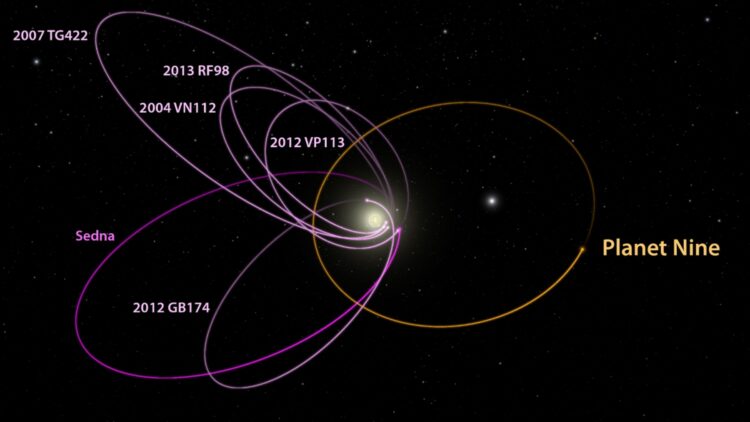Something very strange is happening in the outer reaches of our Solar System. For more than a decade, the hypothesis of a ninth planet, the infamous Planet Nine, has been hotly debated. But now, new observations and simulations are uncovering evidence that many call the most compelling yet. Could we be about to rediscover the ninth planet we lost when Pluto was demoted? Or is something even stranger at play?
The case for Planet Nine: is something massive herding objects beyond Neptune?
Many wonder: why do so many scientists continue to insist on the idea of a planet that has never been seen? Well, the answer is written, or rather, traced, in the distant and chaotic orbits of objects living in the Kuiper Belt, a region beyond Neptune. Since 2014, researchers like Konstantin Batygin and Michael Brown (the same one who “killed” Pluto) have noticed that certain distant bodies share inexplicable orbital patterns.
Then, by simulating the gravitational interactions of these objects, scientists realized that a massive body, invisible until now, seemed to be “herding” the smaller ones, keeping their orbits clustered. Something large, distant, and very slow was interfering with this scenario. And, according to these researchers, Planet Nine would be between 5 and 7 times the mass of Earth and would take 10,000 to 20,000 years to complete one orbit around the Sun.
Silent shifts in space: is Planet Nine finally revealing itself through bizarre motion?
Now, here’s what’s left scientists speechless: in a new deep-sky analysis using advanced telescopes, an anomaly was identified in a region that shouldn’t have significant movement. What astronomers detected became known among them as bizarre motion, a type of unexpected and subtle displacement in objects at the edge of solar influence.
These bizarre motions are actually celestial bodies slightly accelerating or deviating from their orbits. Of course, these behaviors cannot be explained by known influences (Neptune, galactic tides, or random interactions). However, the pattern is consistent with the presence of a hidden, massive planet, silently altering the trajectories of these objects (it appears that Planet Nine is actually close to Earth). In fact, Batygin and his team compared two scenarios:
- Solar System with only the known planets.
- Solar System with a possible influential Planet Nine.
“That’s a really remarkable smoking gun. And it’s obvious in retrospect, so I feel a little embarrassed that it took us almost a decade to figure this out. Better late than never, I suppose,” Batygin said.
Planet Nine or super-Pluto? Why scientists are still split on what’s lurking beyond Neptune
However, not all scientists agree with Batygin’s model. Some believe in a different version of the hidden planet: one that’s smaller, more inclined, and closer to a “super-Pluto” than a Super-Earth. We even have the Japanese Lykawka model:
- Mass between 1.5 and 3 times that of Earth.
- Highly inclined orbit, perhaps even more so than Pluto’s (17°).
- Possible presence of subsurface oceans, thanks to internal energy.
This hypothesis also attempts to explain the anomalies, but with different simulations and without focusing on the same orbital clusters that Batygin observes. Therefore, Lykawka prefers to call it the Kuiper Belt Planet, to clarify that he’s not talking specifically about Planet Nine. Amidst all this, other theories, or rather, questions, have emerged: could it be a primordial black hole? Captured by the Sun billions of years ago? Is it an error in gravity models? Or perhaps our formulas are flawed? These theories exist, of course, but they’re very difficult to test, as is the one linking a black hole to Planet Nine. That’s why scientists like Malena Rice (Yale) prefer to follow the logic of good old Occam’s Razor: “If we already have eight planets… it doesn’t seem so crazy to think we have a ninth.”


